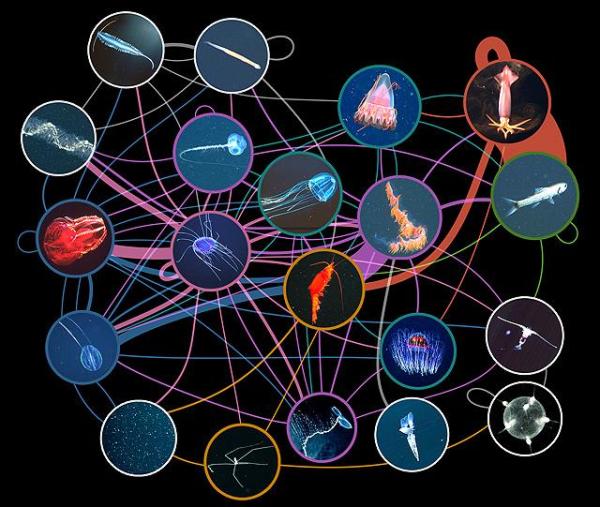
In full disclosure, I have a weakness for jellyfish because I find them to be so beautifully graceful. Who knew they were natural born killers? I learned that from a study entitled "Deep pelagic food web structures as revealed by in situ feeding observations," published in Proceedings of the Royal Society B (for biology). Understanding the relationship of sea creatures’ food networks is difficult for a variety of reasons and has been based primarily on looking at the contents of sea life stomachs or using unique biomarkers to identify meals.
But jellies may be under-represented by this method because when they are eaten, their remnants rapidly disappear and because they are exceedingly fragile limiting the ability to bring them to the surface for investigation. The scientists of the Monterey Aquarium have been studying their coastal shores, and a serendipitous video recorded during the last 27 years by their remotely operated vehicles (ROVs) forms the basis of the report. Because jellies are unconcerned with ROVs, much of the video captures their activity. And the small number of observations, 743 over 27 years makes the study more descriptive than statistical:
- The prey varied with the depth, crustaceans (e.g., crabs, lobsters, crayfish, shrimp, krill) in the most shallow 200 meters, fish in the deeper depths
- Squid, octopi, and cuttlefish (cephalopods) were the big deeper water predators, but the jellies (technically physonect siphonophores) were the shallow water, big predators
- Crustaceans were evidently everyone’s favorite meal
- Some species of jellies were very diverse in their tastes, dining on 75% of available species, others apparently were more picky finding only 60% of dining options to their liking
- As you might expect, all members of the food web were seasonal eaters based upon availability, crustaceans, and fish decreasing as prey in early Spring, replaced by “more soft-bodied and gelatinous prey.”
- Location, location, location was an important issue for our sea friends as it is for us. The location where the eating was observed (and remember that this comes from is serendipitous recordings) also varied for the predators by depth. But again, some predators restricted themselves to one overall depth, but for others (those same ones with the most diverse taste interests) the entire depth range was their buffet.
The research reveals a more involved role for jellies a ‘jelly web’ or ecologic network than the prior "let’s see what is in the stomach" approach indicated. Jellies have a diverse range of eating interests and locations, much like us. Can a Zagat guide for the sea be far off?
Source: Choy, C.A., Haddock, S.H.D. Robison, B.H. (2017). Deep pelagic food web structure as revealed by in situ feeding observations. Proceedings of the Royal Society B. 284: 20172116, doi: 10.1098/rspb.2017.2116



